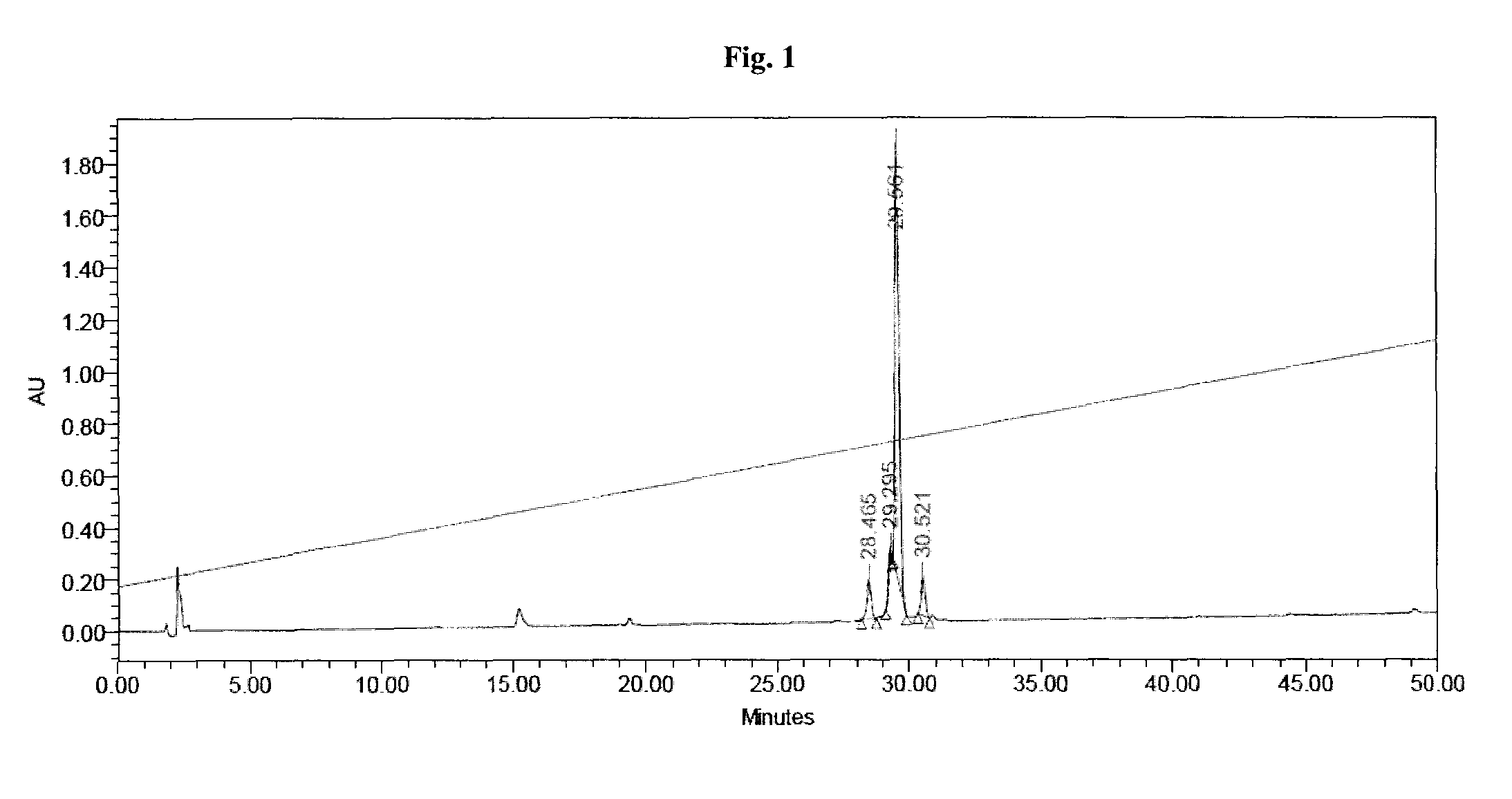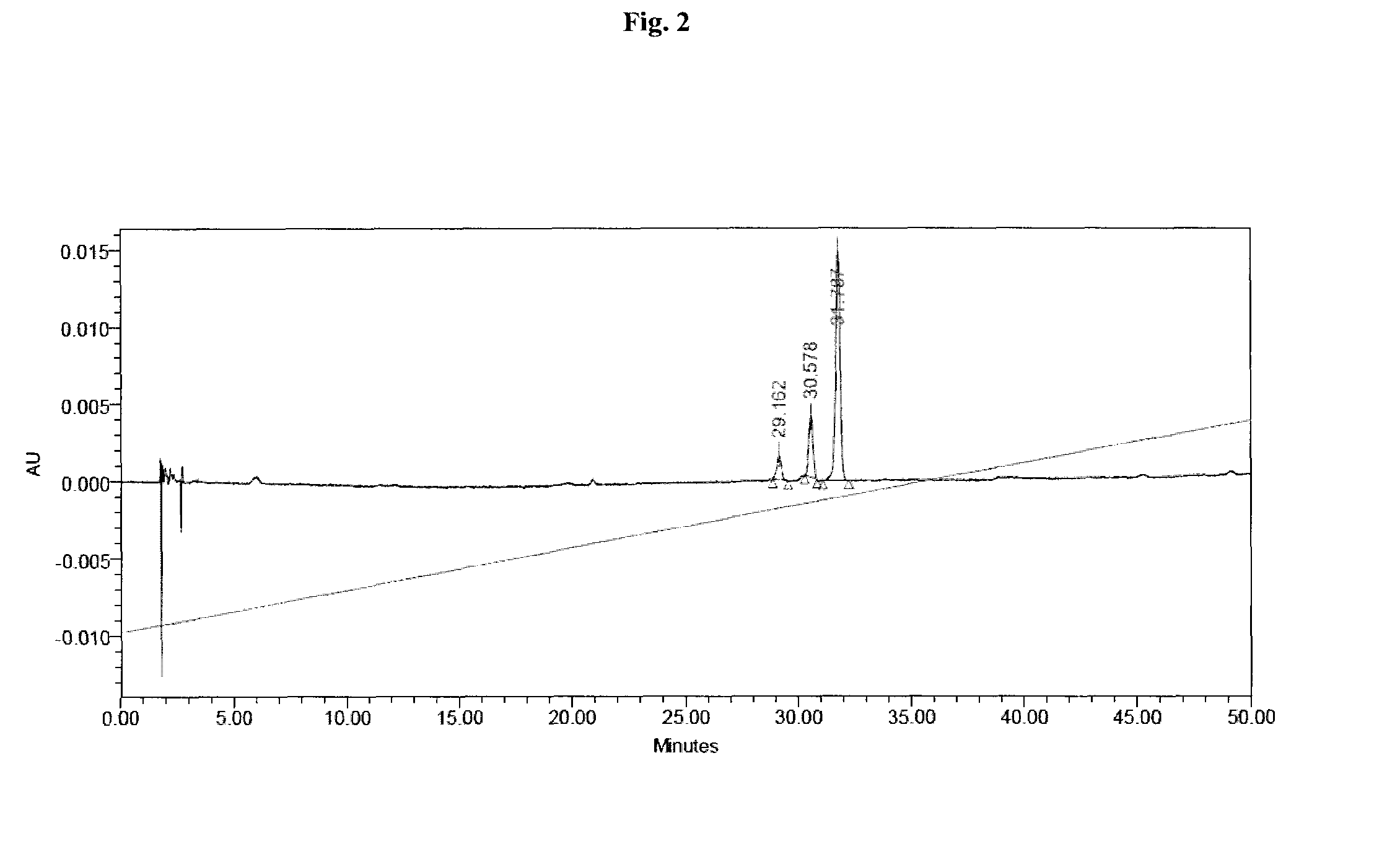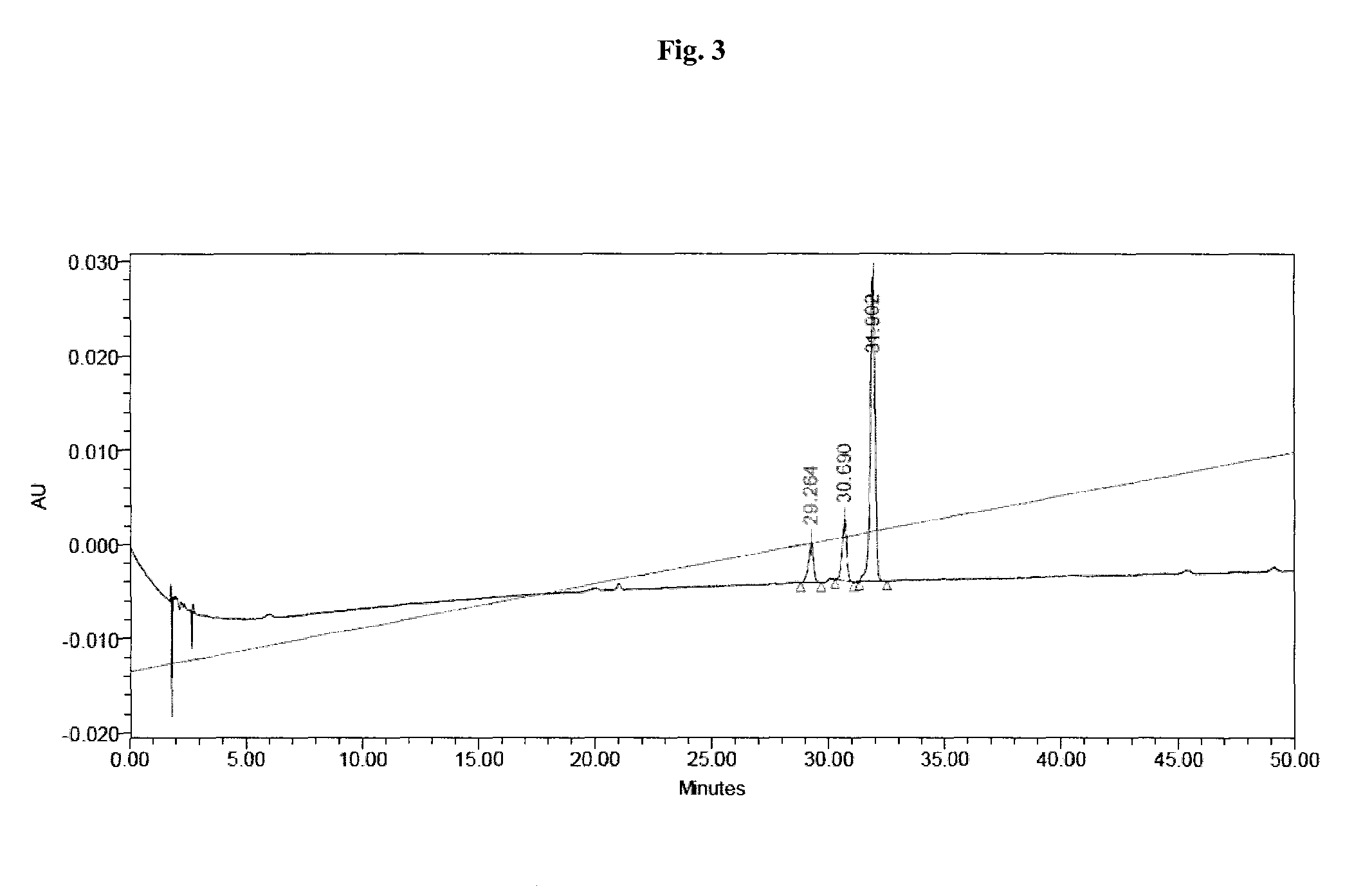Spiro-oxindole MDM2 antagonists
a technology of oxindole and mdm2, which is applied in the field of oxindole mdm2 antagonists, can solve the problems of poor cell permeability, inability to identify potent, non-peptide small molecule inhibitors, and poor cell permeability, and achieves less toxic, less toxic, and great anti-tumor activity and clinical benefit.
- Summary
- Abstract
- Description
- Claims
- Application Information
AI Technical Summary
Benefits of technology
Problems solved by technology
Method used
Image
Examples
example 1
Analytical Data for Compounds
General Information
[0796]NMR spectra were recorded on a BRUKER AVANCE 250, BRUKER AVANCE 300, BRUKER AVANCE DRX-400, or BRUKER AVANCE DPX-500, or similar instrument. Unless otherwise indicated all NMR chemical shifts reported herein are denoted by the delta (δ) scale.
[0797]Liquid chromatography-mass spectrometry (denoted “LC-MS”) analysis was performed using method A, method B, or method C:
[0798]Method A: WATERS HPLC-SQD apparatus; Ionization: electrospray in positive mode and / or negative mode (ES+ / −); Chromatographic conditions: Column: ACQUITY BEH C18 1.7 μm-2.1×50 mm; Solvents: A: H2O (0.1% formic acid) B: CH3CN (0.1% formic acid); Column temperature: 50° C.; Flow: 1 ml / min; Gradient (2 min): from 5 to 50% of B in 0.8 min; 1.2 min: 100% of B; 1.85 min: 100% of B; 1.95: 5% of B; Retention time=tR (min).
[0799]Method B: WATERS ZQ apparatus; Ionization: electrospray in positive mode and / or negative mode (ES+ / −); Chromatographic conditions: Column: XBridge...
example 2
Fluorescence-polarization MDM2 Binding Assay
[0904]The binding affinity of the MDM2 inhibitors was determined using an optimized, sensitive and quantitative fluorescence polarization-based (FP-based) binding assay using a recombinant human His-tagged MDM2 protein (residues 1-118) and a fluorescently tagged p53-based peptide.
[0905]The design of the fluorescence probe was based upon a previously reported high-affinity p53-based peptidomimetic compound (5-FAM-βAla-βAla-Phe-Met-Aib-pTyr-(6-Cl-LTrp)-Glu-Ac3c-Leu-Asn-NH2 (SEQ ID NO: 1)) (García-Echeverría et al., J. Med. Chem. 43: 3205-3208 (2000)). This tagged peptide is called PMDM6-F. The Kd value of PMDM6-F with the recombinant MDM2 protein was determined from the saturation curve. MDM2 protein was serially double diluted in a Dynex 96-well, black, round-bottom plate, and the PMDM6-F peptide was added at 1 nM concentration. The assay was performed in the buffer: 100 mM potassium phosphate, pH 7.5; 100 μg / mL bovine gamma globulin; 0.02%...
example 3
Fluorescence-polarization MDM2 Binding Assay
[0911]The binding affinity of the MDM2 inhibitors was optionally determined using a fluorescence polarization-based (FP-based) binding assay using a recombinant human MDM2 protein (residues 5-109) and PMDM6-F as follows:
[0912]MDM2 protein was serially diluted with a step of 1.8 in a Costar 96-well, black, non binding surface reference 3686 plate, and the PMDM6-F peptide was added at 5 nM concentration. The assay was performed in the buffer: 100 mM potassium phosphate, pH 7.5; 100 μg / mL bovine gamma globulin, 0.01% Triton X-100) and the anisotropy values were measured at equilibrium using a Fusion reader (Packard). The fraction of ligand bound, FSB, was calculated using the following equation FSB=(Aobs−AF) / [(Ab−Aobs)Q+Aobs−AF](ref) where Aobs=anisotropy observed, Ab=anisotropy when all p53 is bound, AF=anisotropy when p53 is free, Q=ratio Fluorescence intensity Bound / fluorescence intensity Free (Biochemistry 43:16056-16066 (2004)). KD was d...
PUM
| Property | Measurement | Unit |
|---|---|---|
| temperature | aaaaa | aaaaa |
| temperature | aaaaa | aaaaa |
| temperature | aaaaa | aaaaa |
Abstract
Description
Claims
Application Information
 Login to View More
Login to View More - R&D
- Intellectual Property
- Life Sciences
- Materials
- Tech Scout
- Unparalleled Data Quality
- Higher Quality Content
- 60% Fewer Hallucinations
Browse by: Latest US Patents, China's latest patents, Technical Efficacy Thesaurus, Application Domain, Technology Topic, Popular Technical Reports.
© 2025 PatSnap. All rights reserved.Legal|Privacy policy|Modern Slavery Act Transparency Statement|Sitemap|About US| Contact US: help@patsnap.com



